Ever wonder how to make hard kombucha (i.e. kombucha with more alcohol in it)? We’re breaking down the basics to alcoholic kombucha. It’s easier than you would think!
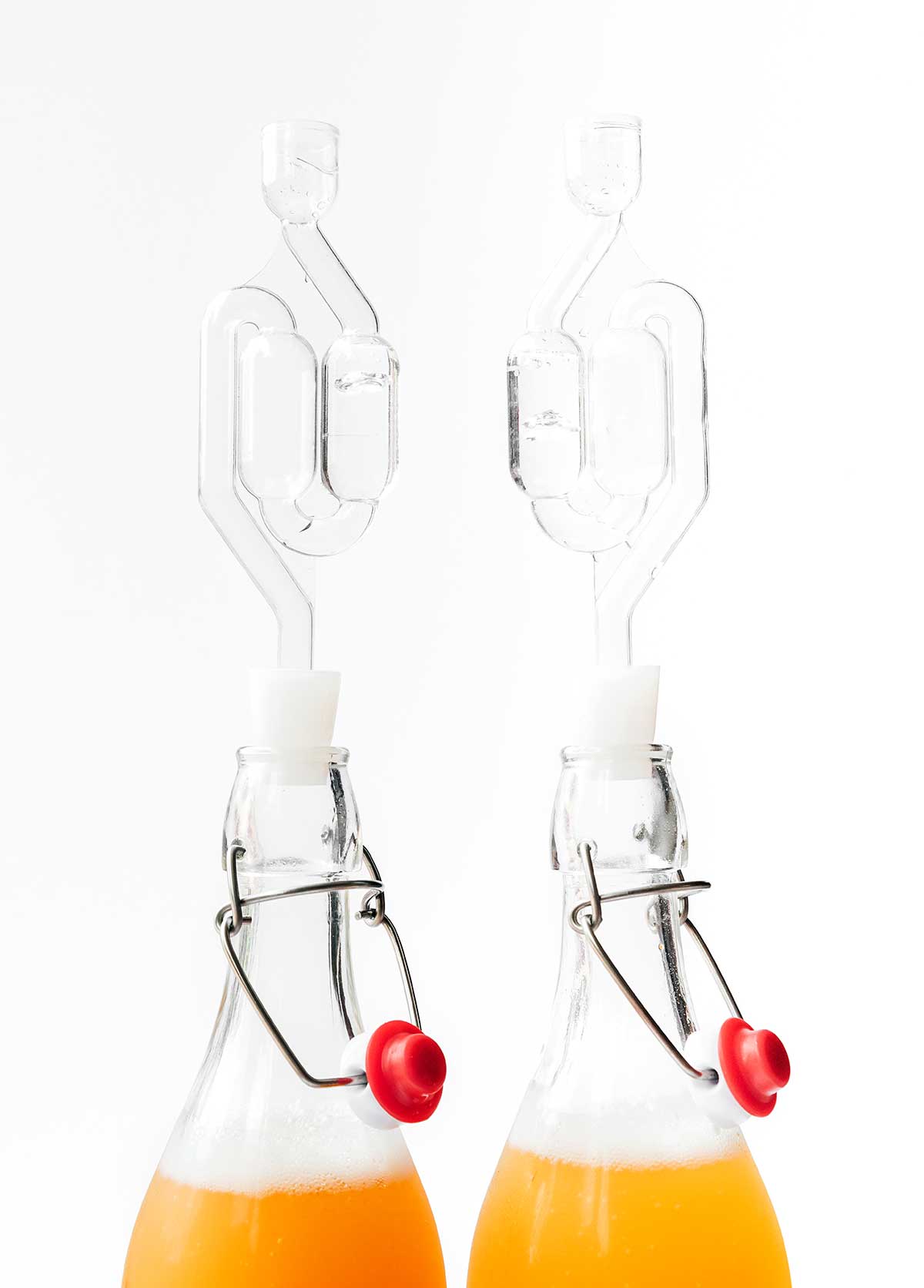
The basics of hard kombucha
Kombucha naturally contains some alcohol (about 0.5%). This is due to the reaction between the naturally occurring yeast in the kombucha, which produces trace amounts of ethanol (alcohol).
Typical kombucha yeast strains do not produce much alcohol on their own, so what do you do if you want to increase the amount of alcohol in your kombucha? Add a different kind of yeast!
By adding a different strain of yeast, such as champagne yeast, to your kombucha, you can make a hard kombucha beverage with a higher ABV (alcohol by volume), around 5%!
After much experimentation (and years of brewing non-alcoholic kombucha to help guide me), I’ve finally landed on the method of brewing hard kombucha that’s both easy and reliable. Let’s brew!
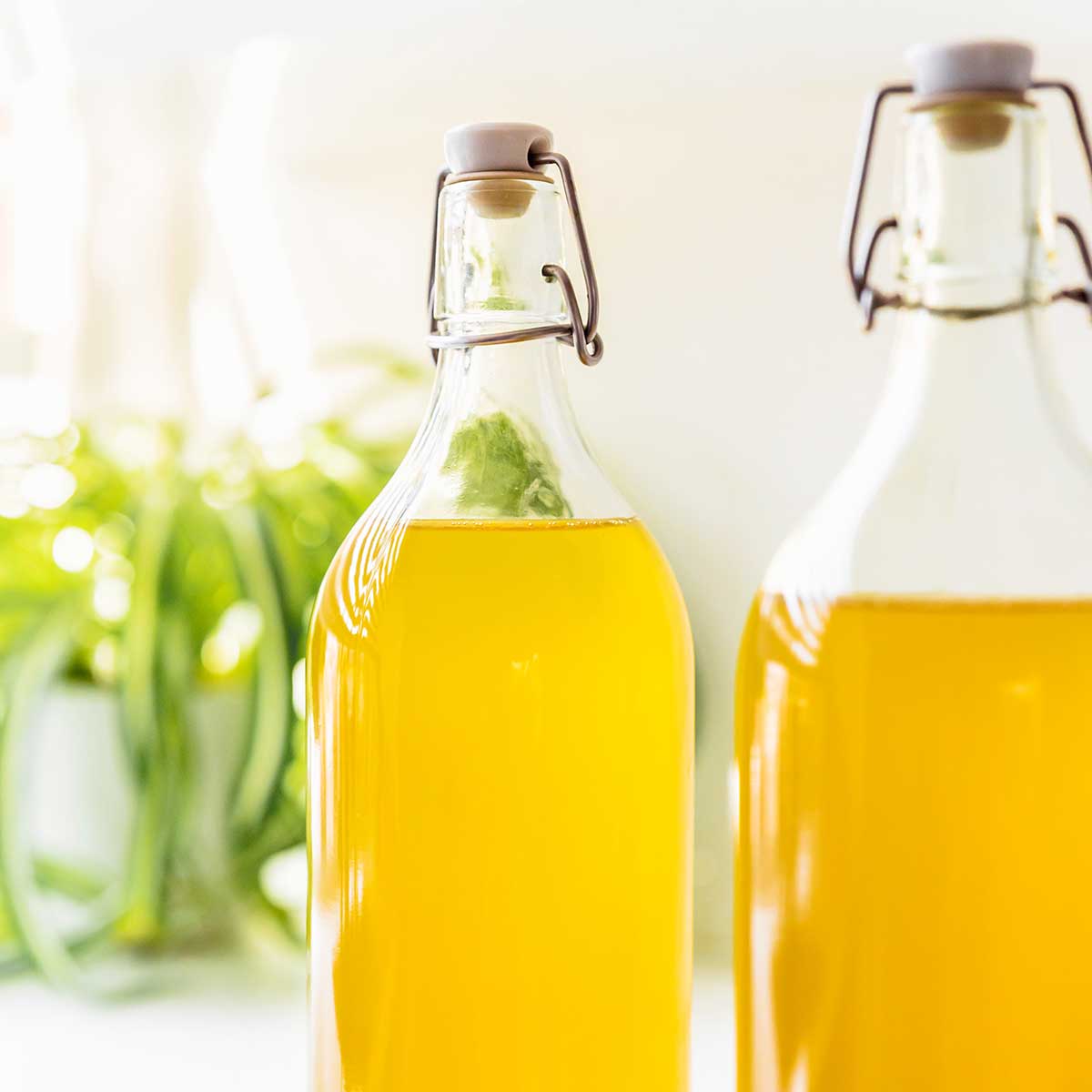
Main Ingredients & Supplies needed for alcoholic kombucha
Kombucha from a first fermentation
First up, you’ll need some kombucha! Take your batch of kombucha straight from the first fermentation to make hard buch. (Here’s how to make kombucha in the first fermentation.) You can use kombucha made from green or black tea here.
Yeast
Adding an additional strain of yeast (different from the kombucha yeast) will help drive up the alcohol content of your kombucha. The type of yeast you choose to use will impact the finished flavor. Some options include:
- Champagne yeast (like this EC-1118 dry wine yeast), which gives a distinctly champagne flavor to your hard kombucha
- Ale yeast (like this SafAle US-05), which has a more neutral flavor
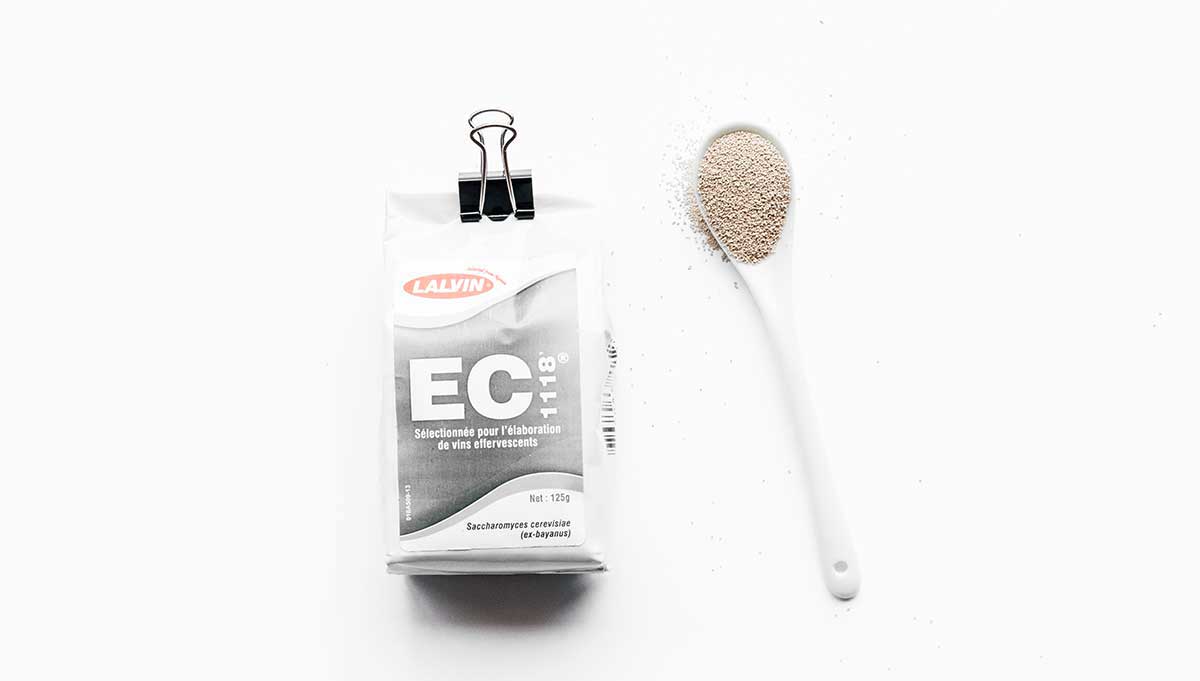
Airlock
The final extra piece of gear you’ll need to brew hard kombucha are airlocks. These effectively let carbonation escape without letting oxygen in.
“But doesn’t kombucha need oxygen?” Good question! When making kombucha in the first fermentation, the bacteria need oxygen to ferment properly. But once the kombucha is finished and you’re ready to booze it up, you’ll want to prevent oxygen from getting to the bacteria so that the bacteria don’t eat the alcohol you’re making! (More on the relationship between bacteria and alcohol in kombucha here.)
A lid won’t work here because you need to allow for air to leave the bottle!
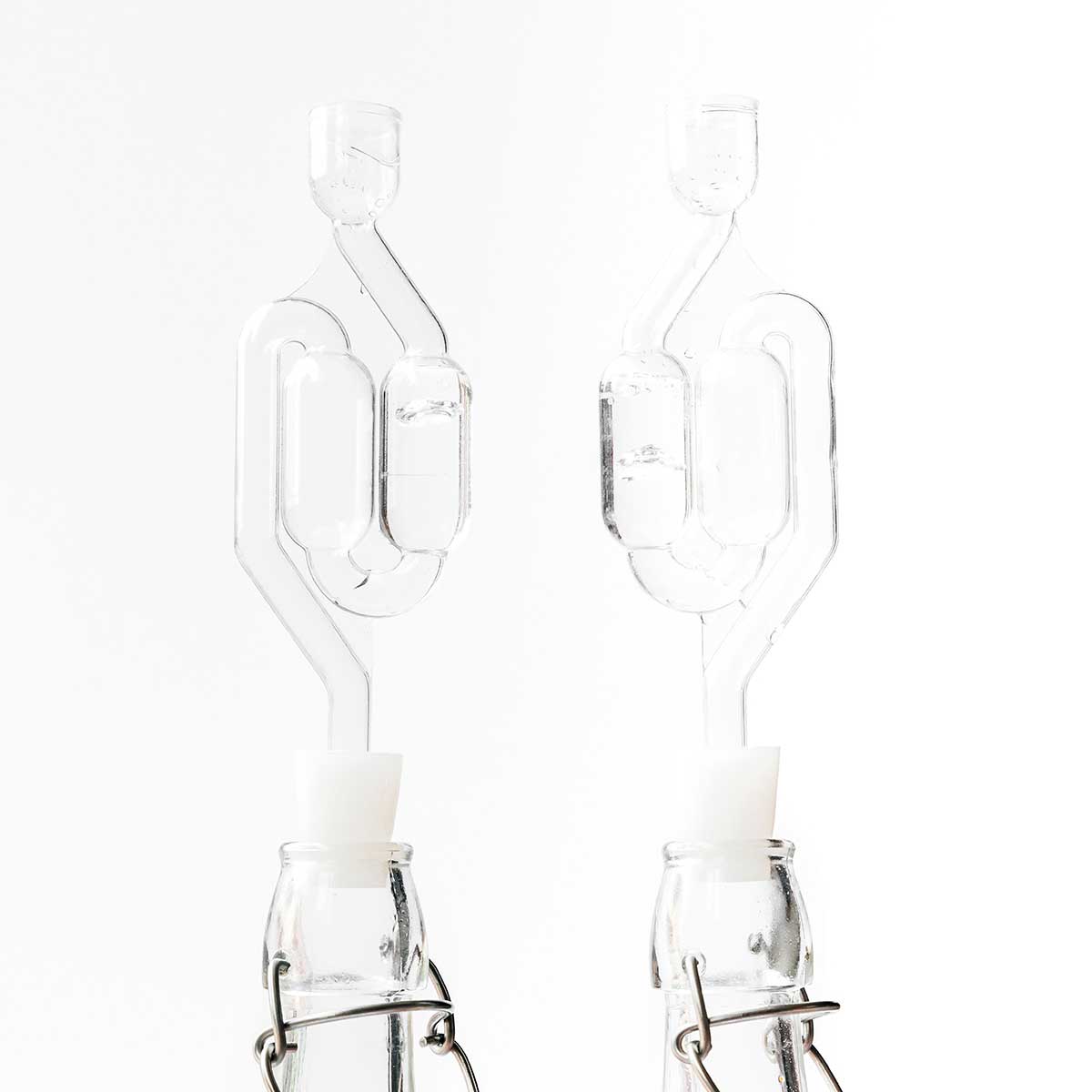
How to make hard kombucha
The process of making hard kombucha is a little different from making traditional kombucha in that we’re adding an extra step in the middle. It goes something like this!
- 1st Fermentation: Make the kombucha (6 to 10 days). This is when you turn sweet tea into kombucha!
- 2nd Fermentation: Make it boozy by adding yeast and sugar, then let alcohol develop (7 to 14 days)
- 3rd Fermentation (optional): Add flavors and seal shut to carbonate (3 to 10 days)
Easy enough, right? Let’s dig into the details!
1st Fermentation: Make the kombucha
In the first step, you’re making kombucha just as usual. You’ll just put sweetened tea, starter kombucha, and a SCOBY (symbiotic culture of bacteria and yeast) into a large jar and let it ferment for 6 to 10 days until you reach your desired flavor (a mix of sweet and tart). Get instructions for the first fermentation here.
2nd Fermentation: Make it Boozy
In the second step, we’ll add a slurry of yeast, sugar, and water, which will increase the alcohol content of your brew. You’ll need:
- 1 cup hot water
- 1 cup white sugar
- 1 tsp yeast (champagne or ale yeast, see notes above)
- 1 gallon of kombucha (from first fermentation)
- Airlocks
1. Yeast Slurry: Stir together the hot water and sugar until sugar is dissolved. Let it cool to lukewarm, then stir in yeast. Allow the yeast to activate for 5 minutes, until bubbles form and the yeast is frothy.
2. Bottle: Meanwhile, transfer kombucha to bottles or a growler (or any vessel with an opening that will fit your airlocks. Portion yeast slurry equally into each bottle of kombucha.
3. Airlock: Fill airlocks with water (to the designated line – you may need to read the instructions for your particular airlocks). Place airlocks onto each bottle.
4. Ferment: Set bottles somewhere dark and room temperature, and let ferment for 7 to 14 days. It’s ready when the flavor is somewhat dry and boozy! If you’re not moving on to the next step (adding flavor), seal the bottles shut and transfer to the fridge to stop the fermentation process.
“I’ve made it and it’s WONDERFUL!
I was wondering what you needed to do to raise the alcohol content. More Yeast? More sugar?”
3rd FERMENTATION: Add flavor
In this final (and optional) step, you can add flavors to give your hard kombucha a fun taste. This is the equivalent of the “second fermentation” in traditional kombucha brewing. You’ll just add whatever flavors you want to your bottle (like pureed fruit, fruit juice, ginger, herbs, or spices), then seal it shut. Let sit for 3 to 10 days, until bubbly and carbonated. Transfer bottles to the fridge to stop the fermentation process. Check out all of our flavor recipes here!
How much alcohol is in my hard kombucha?
The amount of alcohol in your finished hard kombucha will depend on how much sugar you added in the 2nd fermentation. Typically each 1 cup of sugar will give you about 4% ABV. Increasing this ratio and adding more sugar will result in a higher alcohol level.
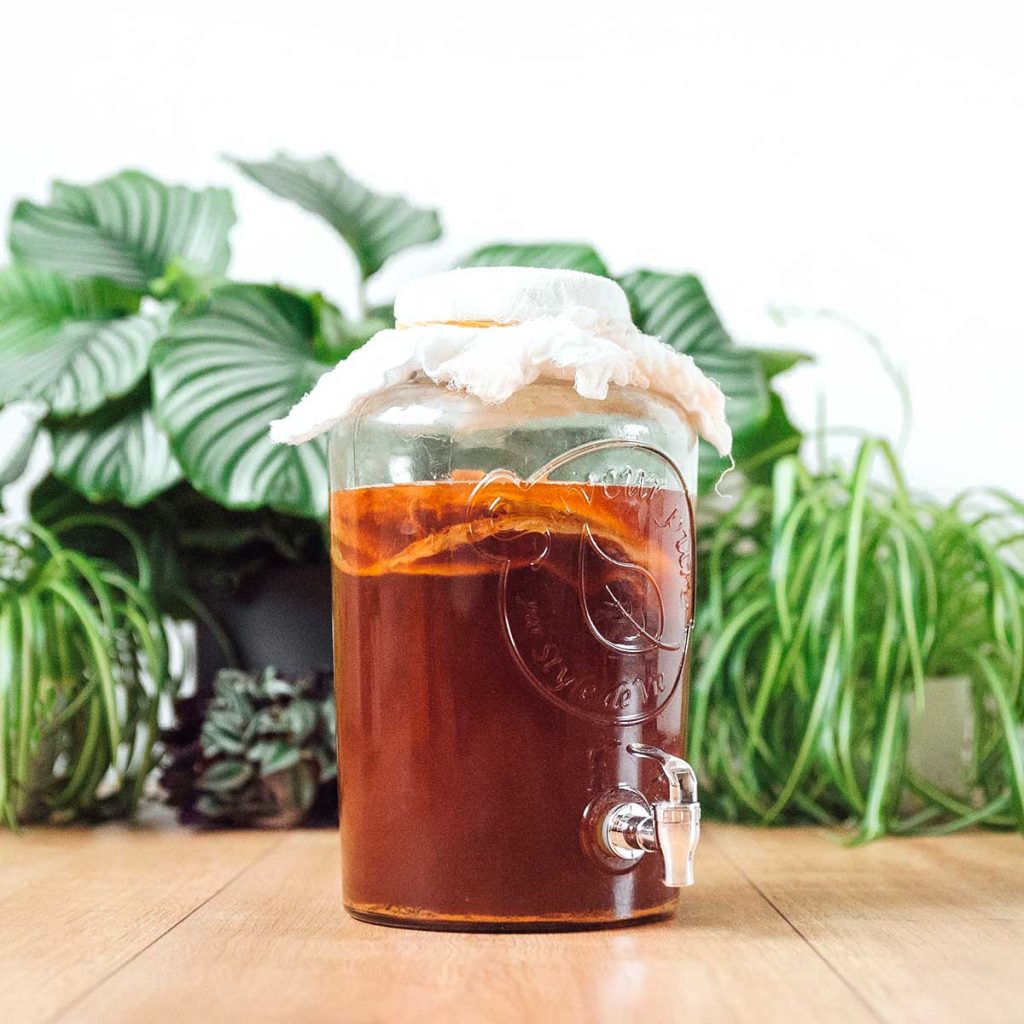

How To Make Hard Kombucha
Ingredients
- 1 cup hot water
- 1 cup white sugar
- 1 tsp champagne or ale yeast
- 1 gallon unflavored kombucha, from a first fermentation
Instructions
- Yeast Slurry: Stir together the hot water and sugar until sugar is dissolved. Let it cool to lukewarm, then stir in yeast. Allow the yeast to activate for 5 minutes, until bubbles form and the yeast is frothy.
- Bottle: Meanwhile, transfer kombucha to bottles or a growler (or any vessel with an opening that will fit your airlocks. Portion yeast slurry equally into each bottle of kombucha.
- Airlock: Fill airlocks with water (to the designated line – you may need to read the instructions for your particular airlocks). Place airlocks onto each bottle.
- Ferment: Set bottles somewhere dark and room temperature, and let ferment for 7 to 14 days. It’s ready when the flavor is somewhat dry and boozy! If you’re not moving on to the next step (adding flavor), seal the bottles shut and transfer to the fridge to stop the fermentation process.
- Flavor (optional): At this point you can flavor your bottles however you want! See our favorite kombucha flavors here.
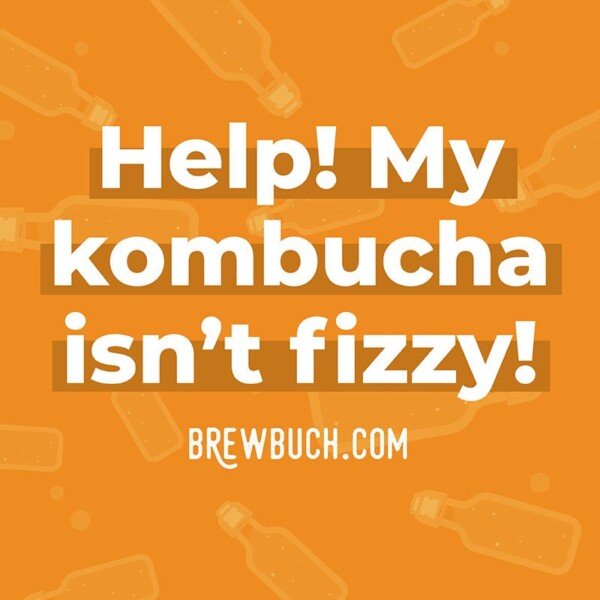
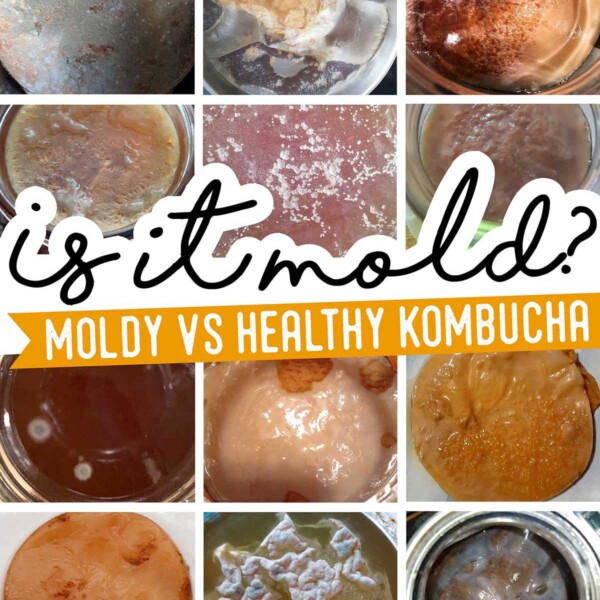

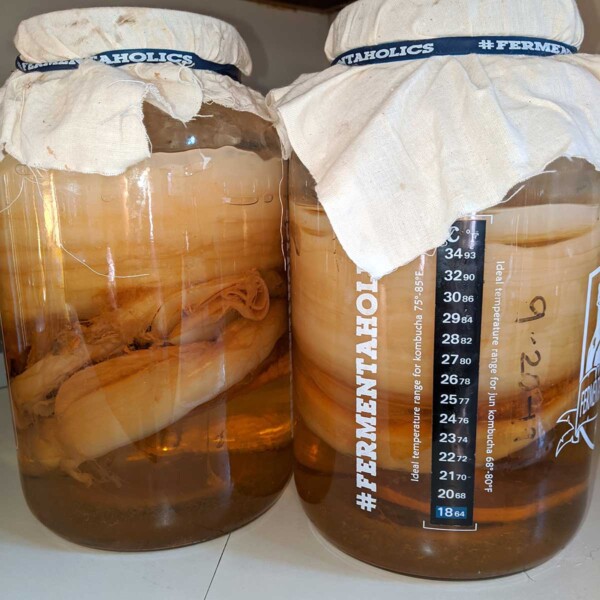
I’ve never used air locks. When I take them off will the kombucha spray everywhere? In the summer due to heat the carbonation in my second (fruit) ferment has been known to blow to the ceiling. (-;
An airlock would actually prevent this! It allows air to go out without allowing any in 😀
My second ferment of 1 gallon kombucha, 1.5 t. Champagne yeast, 1c. sugar in 1c. water, 10 days, grew its own new SCOBY. Lid on instead of cloth. A bad thing or not?
Natural part of the fermentation! 😀
Thanks, I just started my first batch but after re-reading this I realized I put the whole packet of yeast in. Will this be ok? I used EC1118 yeast. I planned on adding fruit after F2 was done before bottling into growlers.
It depends on how big the bag of yeast was! You can always add more of the other ingredients to hit the right ratio. Otherwise it may just have a more yeasty flavor.
Can i use regular bakers yeast?
Not in this case – it’s a different strain of yeast than champagne yeast.
Good afternoon,
My hard Kombucha brew has turn cloudy, should I be concerned? It’s on it’s fourth day fermentation.
Thank you
Virginia
Cloudy means there is a lot of yeast activity, which is good!
Thank you for the info . Will this beer still have the good healthy characteristics of the kombucha ? Or the yeast and sugar overpower this?
Yep it sure will have those healthy properties! 😀
Sara,
What is the process to make the water-sugar & yeast-nutrient mixture?
The following is the process I have just used. I would appreciate feedback to figure out where things need an update. Thank you.
I’m seeking comments, guidance or feedback on my current process.
A 10 day F1 was finished last Tuesday and starting a F2 on Tuesday evening. This is my 4th attempt at making a successful F2. Attempts 1-3 were solid failures!
I have read numerous articles from this group and other sources (BoochCraft etc), watched YouTube video clips and I seem to be missing some nuance of success. Bottom line is I’m frustrated with the nominal processes posted so I would appreciate some guidance. I’m suspect of how much sugar to add and how much EC-1118 to add. In the past I may have not added enough sugar and EC-1118 yeast. The following is my current process.
Two 1 gallon growlers fermenting F2. ‘A’ & ‘B’.
Growler ‘A’ has 450g of cane sugar (target is 5%). 1 package of EC 1118 champagne yeast. 5g DAP, 1.5g FermaidO, and the balance of F1 Kombucha. Boiled water, cooled to 37C, added 1 cup water (previously boiled), 50g sugar, 5g DAP, 1.5g FermaidO. Stirred and placed in 1 gallon growler that has 2.5 liters of F1 at room temperature and 400g sugar (450-50).
Growler ‘B’ has the same except for 535g sugar for a target alcohol of 6%. Same process with 1 package of EC 1118 yeast and nutrient additions.
Process as follows.
a) Boiled 1+ cups of water for sugar-yeast slurry for two 1-gallon growlers.
b) Dissolved 100 grams of cane sugar into 1+ cups of previously boiled water. Temperature 40-42C.
c) Moved 1/2-cup water-sugar mixture to sanitized glass bowl, cooled to 37-38C and added DAP and FermaidO, stirred. Added 1 package if EC 1118 champagne yeast to each 1-gallon growler. Let sit for 10-15 minutes while maintaining temperature using a water bath.
d) To each 1-gallon growler, I dissolved balance of cane sugar in approx. 2.5 liters of F1 Kombucha. ‘A” has 400g and ‘B’ has 485g cane sugar.
e) To each 1-gallon growler I added approx 1/2+ cup of water, dissolved cane sugar, DAP and FermaidO and EC-1118.
f) Each gallon growler is filled to the base of the neck. (Note: nominal residual pedicle flowed into each growler and subsequently floated to clog the growler neck or seep into the airlock.)
g) Inserted airlocks using vodka as the liquid.
h) Day 3, good bubbles. I may have over filled both so I poured off a bit to clear the growler necks, cleaned the airlocks, refilled with vodka and all looks good. Bubbles are frequent.
i) F2 ferment should have a duration of (how many days – range)? a) until there are no more bubbles, b) until the bubbles flow at a much slower rate, c) taste test?
j) Temperature is 75C.
k) Original SG nor Final SG were not measured.
Thank you for your assistance.
Hi Robert! What have the “failures” entailed? The flavor being off? You might post this in our Facebook group – they’re GREAT at helping to troubleshoot more complex problems like this one!
Hi Sarah, Thank you for all the wonderful information you share with us.
Can you use the Scobys from the second ferment (boozy) as a starter Scoby and would it be ok to add it to the Scoby hotel ??? Just hate to waste.
I wouldn’t recommend adding any non-traditional (i.e. flavored or boozy) SCOBYs in with the others. Use them in other ways (like in smoothies or to make candy!)
Thank you for the great recipes
Do you have any tips on making a higher alcohol content than that? Im using Safale US-05 ale yeast. Im new to brewing hard kombucha, but have made it for the first time recently and want to up the alcohol to the limits of the yeast. I assume it needs more sugar, but I don’t know how much. Do you have any suggestions?
Yep, generally more time and more sugar = more alcohol. Typically each 1 cup of sugar will give you about 4% ABV.